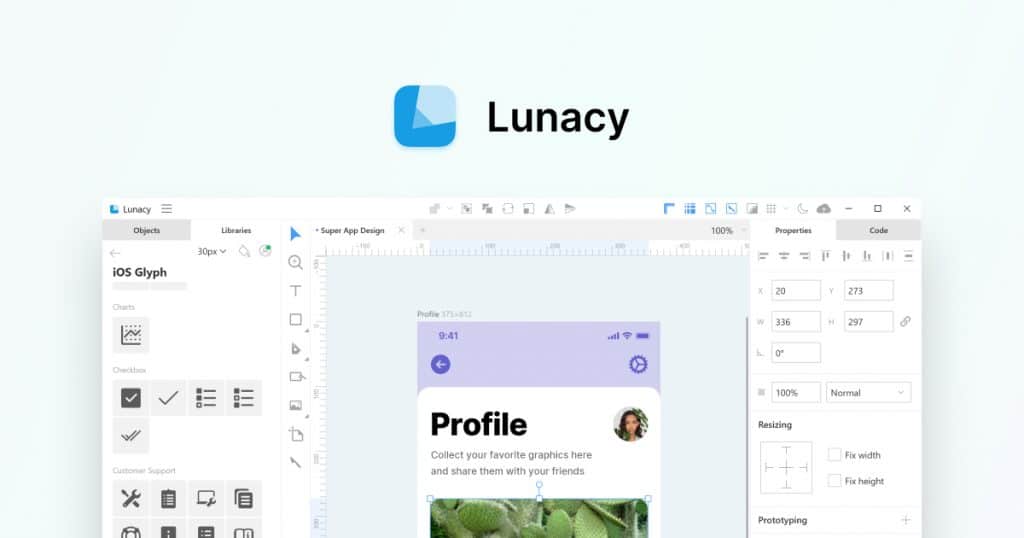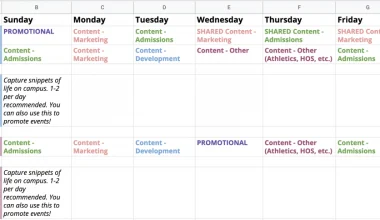As an entrepreneur exploring the internet, I’ve realized the significant influence of visual branding on a company’s success. Creating an appealing visual identity that resonates with your audience and sets you apart from the competition goes beyond just having a catchy logo or stunning visuals. Throughout my journey, I have relied on free graphic design software to enhance my brand without incurring excessive costs. Likewise, at the end of this journey, you’ll have the skills to create visually appealing content. That will enhance your brand and captivate your audience, all while being cost-effective. Alright, let’s dive right in and begin!
Key Takeaways
- Free design software allows organizations of all sizes to generate professional-looking images. These tools, with user-friendly interfaces and a variety of free templates and design elements, make design accessible to everyone.
- The ideal program for you is determined by your requirements and level of skill. When selecting the right tool, keep in mind your design expertise, project requirements, and collaboration needs.
- Customization is essential. Avoid using generic templates. Incorporate your brand’s distinct identity by applying design principles such as color consistency and judicious use of white space.
- Use time-saving ways to streamline your workflow. To increase your productivity, plan your work, use templates properly, and learn keyboard shortcuts.
- Free design asset libraries can be your best friend. Use the multitude of free stock pictures, icons, and fonts accessible online to enhance your visuals without breaking the budget.
Overview
It’s no secret that businesses of all sizes often struggle with creating top-notch visual content. These are some of the common challenges I faced, and I’m sure many of you can relate:
- Budget Constraints: Investing in the services of a skilled designer can be a substantial cost, particularly for startups and small businesses.
- Insufficient in-house expertise: Not every business owner possesses a natural talent for design. Approaching intricate design software can feel overwhelming.
- Limited time available: Running a business requires careful balance and coordination. Creating visually appealing content can often seem like a daunting task.
Discover the power of free graphic design software and how it transformed my business. Tools like Canva offer a user-friendly interface, a vast library of templates, and access to high-quality design elements—for free! In just a few weekends, I was able to create stunning social media graphics, captivating email newsletters, and brochures for the website. Allow me to share with you how taking advantage of free design software proved to be invaluable in overcoming those initial obstacles:
#1. Cost Effectiveness
With the use of free software, you can save on design fees and allocate your resources to other important aspects of your business.
#2. User-Friendly
Numerous free design tools offer user-friendly interfaces with drag-and-drop functionality, making them ideal for individuals who are new to design.
#3. Loaded with Features
Do not underestimate the value of this product. These programs provide a wide range of features, including photo editing tools and pre-designed templates for various marketing materials.
Ultimately, the availability of free graphic design software has completely transformed my approach to branding and visual storytelling. These tools have enabled me to enhance my brand’s visual identity while maintaining high standards of quality. They have allowed me to unleash my creativity and make the most of the available resources and accessibility.
Lastly, embrace the spirit of innovation, leverage the power of imagination, and allow your brand’s visual identity to radiate. In the end, the potential is boundless when equipped with the appropriate resources and a dash of imagination.
Graphic Design Software: What is It?
Graphic design software refers to the apps and programs that graphic designers use to generate, edit, and change digital pictures. They enable designers to edit and resize photos, create original graphics, combine text, color, and forms, and bring their ideas to life.
Also, there is a diverse range of graphics software available on the market, ranging from simple applications that allow users to generate and edit basic photos. And the complicated tools that can be used to build detailed 3D models and animations.
As a business owner who loves being creative, I found that getting the right graphic design tools was very important for improving the look of my brand. However, choosing the right tool can be hard. This is because there are so many to choose from, and each one has its features and functions. But through trial and error, I’ve learned some important things to consider when choosing the best graphic design tools for your needs.
#1. User-Friendliness and Accessibility
For someone who values speed and simplicity, accessibility is very important when picking graphic design tools. It doesn’t matter if you’re a seasoned designer or a new business owner; choosing a tool with an easy-to-understand layout and features can considerably speed up the design process. So, while looking for software, make sure it has good tutorials, customer service, and a group of users who can help you with any problems you run into.
#2. Integration and Compatibility
Integrating smoothly with current tools and workflows is important for getting the most done in today’s connected world. Hence, consider graphic design software that works well with other programs and platforms you use every day, like social media sites, project management tools, and cloud storage services. This is because it keeps things running smoothly between jobs, and gets rid of the hassle of transferring files by hand and fixing problems.
#3. Versatility and Flexibility
As your company changes and grows, so will your design needs. Choosing graphic design software that is flexible and can adapt to new needs is therefore very important to me. Look for tools that have a variety of design features and abilities, allowing you to test out various creative paths and design styles. Software that supports various file formats and makes working together with clients and team members easy is also something to think about.
#4. Cost and Value
Although buying expensive graphic design software might seem like the best option. But you should carefully think about your budget and the total value. Numerous graphic design tools that are both free and cheap have powerful features and functions that are on par with those found in paid programs. It’s possible to find a tool that is the right mix of quality and price by carefully comparing the features and benefits it offers.
#5. Performance and Reliability
Reliability and performance are musts when it comes to graphic design tools. For consistent results and less downtime, choose tools with stable performance, smooth functioning, and dependable customer support. Additionally, think about software that gets regular changes and improvements to stay on top of new design trends and technological advances.
In the next section, we’ll delve into some of the top free graphic design software options, revealing their strengths and guiding you toward the perfect fit for your needs.
Free Graphic Design Software: Top Free Graphics Software

Image by Logo Graphix
You’ll need a comprehensive solution that gives you this much control if you want to change your website’s colors, pictures, logos, and menus. If you’re just making small changes to your color scheme or picture quality, though, you won’t need to do that. Now the question is which software tool will work best for your business. Here are some of the best free logo software to help you make your choice:
#1. Canva

For social media design features, Canva is a free graphic design tool that can do a lot of different things. You can make creative social media posts with Canva, which is great for simple graphic design projects. They even have a great one-page website maker that makes it easy to start designing websites.
Like any free tool, it doesn’t give you a lot of choices if you need to make a lot of graphics or make a lot of changes to them. It’s amazing, though, how much free content their design app has. Almost everything in Canva is free to use, even the animations and any design. There is also a huge library of free photos, fonts, drawings, and artwork.
# 2. DesignWizard

Similar to Canva, DesignWizard has a free version that has all of its tools. With over 10,000 free templates, it’s easy to make digital things like YouTube channel art and social media posts, as well as print things like gift cards and sales posters.
You can also use the more than 1.2 million pictures, videos, drawings, and graphics that DesignWizard has in its library. You can also add fonts, photos, and logos, make your color schemes, and change the size of designs to make each finished product unique to your brand.
#3. Piktochart

Piktochart is a graphic design, picture editing, and data visualization software that is used to produce infographics, presentations, social media graphics, posters, flyers, and reports. This feature lets you drag and drop your image or a website screenshot to have your brand colors automatically extracted.
The free version of Piktochart lets you make professional images from data by using charts and maps. Connect it to any external database program to instantly get data for your infographics. Also, the free version of the app comes with 100 MB of cloud storage.
Free Features
- Template Collection: Access a template library made up of pre-designed templates, stock photos, drawings, and icons, and use them in your designs as needed.
- Teams collaboration: Here, you can include up to four people and let them edit, comment on, and view other team members’ visual assets so they can be used in other projects.
- Publishing on social media sites: Your visuals can be shared on other social media sites straight from the Piktochart dashboard when you connect to third-party social media sites.
#4. Lunacy

Lunacy is a desktop software for graphic designers that edits vector graphics. Since Lunacy is free and doesn’t have any ads, secret costs, or locked features, it’s a great option for new UI/UX designers who can’t afford to subscribe to expensive graphic design apps. Additionally, to be great for beginning graphic artists, Lunacy has many advanced and powerful tools, such as a ready-to-use UI kit, placeholder text generator, pen, eyedropper tools, and more.
Share a document quickly with up to 100 teammates and work on it together, making changes, leaving comments on each other’s work, and getting feedback in real-time. Hence, Lunacy is a superb way for graphic design teams and group projects to work together.
#5. Adobe Spark

A free option for Adobe Illustrator is Adobe Spark. Although some features are missing, it works with other Adobe programs. It comes with a lot of free themes and is simple to use. Spark is a great tool for quickly making ads or photos for signs.
Concerning the possible downside? Due to its restricted features, this is a great place for beginners to start, but it’s not as useful for more complex projects or designers with more experience. The good news is that Spark is available for both web and mobile, so you can design anywhere and anytime.
Top Free Graphics Software: Design Principles and Tips
Free design software is great, but keep in mind that templates are only a starting point. However, when you personalize them to represent your brand’s distinct personality, that is when the real magic happens. Below are a few tips to remember when designing :
#1. Brand Consistency
Imagine your brand as an individual with your sense of style. Is your brand’s tone more serious and formal, or more lighthearted and carefree? Make sure that shows in your graphics. Consistent color schemes, typefaces that reflect the personality of your business, and strategic logo integration are all important design elements to keep in mind. I used a paw print graphic that appeared in all of our marketing materials and made sure that every social media post matched our logo’s color scheme—bright blues and lively yellows—when I initially began using Canva for my pet care service.
#2. Be Minimalist
Avoid distracting your audience with unnecessary visual elements. Prioritize the most crucial message and utilize graphics to improve it; maintain a transparent information hierarchy. To keep your audience’s attention and not overwhelm them, make good use of white space.
#3. Embrace Your Brand Story
Graphics are a powerful means of narrative expression. So, put them to use by telling the story of your brand, striking an emotional chord with your target audience, and creating the impression you wish to leave with them. Just like me, using free tools like Designwizard, I made infographics about pet care tips. To make them more appealing, I utilized colorful pictures of various dog types and happy colors to show how much fun it is to be a pet owner.
In addition to that, you can upload your own typefaces and brand assets to a lot of free design tools. Because of this, you can personalize your images even more and make sure they blend well with your current brand. However, by following these tips and adding your brand’s unique personality, you can transform generic templates into stunning visuals that resonate with your audience.
Optimizing Your Workflow with Free Software
My experience as both a business owner and an artist has taught me the value of finding ways to increase productivity without sacrificing quality. Likewise, I have discovered effective approaches to enhance design methods and maximize the potential of free graphic design software by embracing failure as a necessary learning experience.
#1. Organize Your Projects
Set aside some time to think about ideas and arrange your content calendar before you jump into design. This will save you time in the long term by helping you envision the kinds of images you’ll need and by enabling you to build designs in batches. For instance, I took advantage of Canvas’s “duplicate” tool to effectively make variants of the same design with various content when I was making social media visuals for an entire month. I planned all the themes and topics.
#2. Be Smart With Templates
Templates are great for saving time, but there’s more to it than that. To make them fit your brand and meet your needs, use them as a foundation and then make extensive customizations.
#3. Master Keyboard Shortcuts
Copying, pasting, and aligning objects are just a few of the common tasks that most free design software makes available using keyboard shortcuts. In essence, you can get your work done much faster if you take the time to master these shortcuts.
#4. Design Asset Libraries That Are Free
Free design materials abound on the internet! Superior stock images for any event are available on websites such as Pexels and Unsplash. Sites like Freepik and Font Awesome include a ton of fonts and icons. Your designs can be elevated without breaking the budget with these free libraries.
#5. Content Curation Tools
A bit overwhelmed by all the free design assets out there? Adobe Spark or Snappa are content curation solutions that you might want to consider. Platforms like this streamline the content development process by providing pre-made templates that include free stock pictures and iconography.
#6. Working with Other Team Members
The creative process of design is most effective when done in a group. To achieve efficiency, it has been crucial for me to promote a collaborative work environment. Collaborative design software and cloud-based storage platforms have allowed me to work closely with my team, make real-time comments, and iterate on concepts together. What was the outcome? Together, our unique skills, experiences, and viewpoints enhance our work and fuel creativity.
Finally, optimizing design workflows isn’t merely about cutting down on wasted time; it’s also about releasing latent creativity, encouraging teamwork, and producing observable outcomes.
Is Photoshop graphic design free?
There isn’t a free version of Photoshop on the web, however, you can try out some of Photoshop’s most popular tools and uses online with the help of guided tutorials without creating an Adobe account.
Is Canva better than Photoshop?
In terms of creating images, if you’re sticking with premade templates, Canva is the faster program.
Can you sell what you make on Canva?
Canva’s Content License Agreement does allow you to use both Canva Free and Pro Content to design and sell a range of products.
What is the cost to upgrade from free graphic design software to a paid one?
Graphic design software can cost as low as $6 per user per month or up to $299+ per month, depending on various factors, including the design capabilities, number of users, templates, cloud storage, and priority support. Most graphic design solutions typically include the following pricing plans:
Conclusion
Looking into free graphic design software has made me understand how many chances and benefits there are for businesses that are willing to try out this cutting-edge set of tools. No one can overstate the importance of free graphic design tools for visual content, from enhancing company images to driving engagement and sales.
So, to all of the entrepreneurs, marketers, and creatives out there, I encourage you to take the initial step toward incorporating these free graphic design tools into your marketing efforts. Whether you’re redesigning your social media presence, renewing your website design, or creating appealing marketing materials, you have the potential to transform your visual content.
In addition to that, remember, that the journey is an ongoing learning experience. Don’t be scared to experiment, have fun, and enjoy the creative flexibility that free design software provides.
References
- .cyberlink.com
- zapier.com
- bigsea.com
- .hubspot.com






